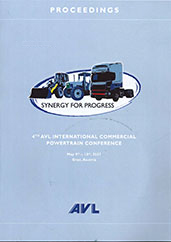Technical Paper
3-D Diesel Spray Simulations Using a New Detailed Chemistry Turbulent Combustion Model
2000-06-19
2000-01-1891
Until recently, the application of the detailed chemistry approach as a predictive tool for engine modeling has been sort of a “taboo” for different reasons, mainly because of an exaggerated rigor to the chemistry/turbulence interaction modeling. In terms of this ideology, if the interaction cannot be simulated properly, the detailed chemistry approach makes no sense. The novelty of the proposed methodology is the coupling of a generalized partially stirred reactor, PaSR, model with the high efficiency numerics to treat detailed oxidation kinetics of hydrocarbon fuels. In terms of this approach, chemical processes are assumed to proceed in two successive steps: the reaction follows after the micro-mixing is completed on a sub-grid scale.




